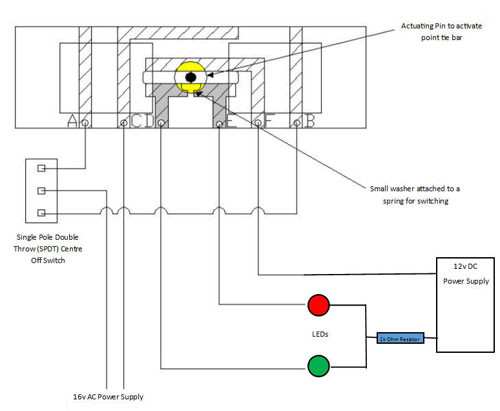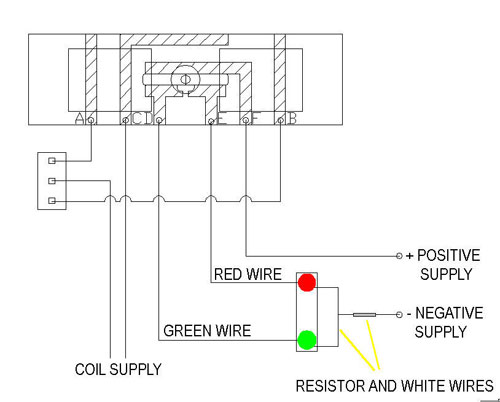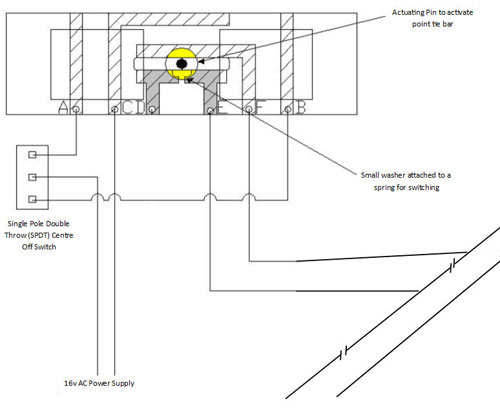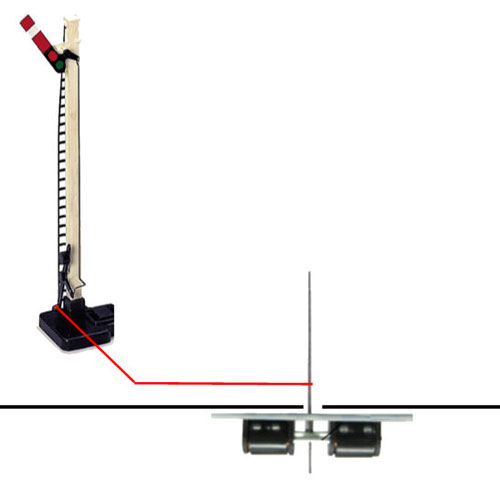|
| OO Scale | N Scale | G Scale | Z Scale | HO Scale | Slot Cars & R⁄C |
| |||||||
|
|||||||
| Home Page | |||||||
| BUY GIFT VOUCHERS | |||||||
| Products | |||||||
| Latest News | |||||||
| RIGHT LINES | |||||||
| Bargains | |||||||
| Downloads | |||||||
| Events | |||||||
| Careers & Jobs | |||||||
| Carriage Services | |||||||
| About Us | |||||||
| Contact Us | |||||||
| Pay Us A Visit | |||||||
| Meet The Staff | |||||||
| Links | |||||||
| SHOPPING BASKET |
Your shopping basket is empty. To add an item, click the "Buy" button
| YOUR ACCOUNT | ||
|
||||
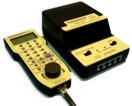 |
||||
| Prodigy Advance Digital System |
||||
| Cased Controllers |
||||
| Panel Mount Controllers |
||||
| Walkabout Controllers |
||||
| Modules & Transformers |
||||
| Scenics & Accessories |
||||
| Wiring & Electrical Components |
||||
| Tiny Signs | ||||
| Tools | ||||
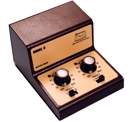 |
||||
| O Scale | Wargaming | Architectural | Narrow Gauge | Tools+ | ||
Point Motors - Part 3: Other Uses for Point Motors

MATT LOVELL shows us what point motors can do beyond just points.
In previous articles we have looked at different styles of point motors including solenoid and slow action designs from various manufacturers. Now, we all know the primary function for a point motor is to throw the tie-bar on a point and operate the blades in the desired direction - However point motors can also be used for other features and functions. In this article we will look at how point motors can be used in different ways.
Electrical Operation
Most point motors come with an auxiliary switch, this means that when the point motor operates it acts as a single pole double throw switch. I have listed below a few examples of how this switch can be used.
Switching LEDs:
By wiring the common on the point motor switch to a power supply, you can use the switch to power a set of LEDs on a control panel or mimic board.
Click image for larger version.
This is useful as you do not need to wire up a separate relay or other switch to show the direction of the point.
Colour Light Signals:
Using the same method as above, you can use the point motor to operate either a single or double head twin aspect signal.
Click image for larger version.
This method can be used in platforms, sidings and other railway scenes.
Layout Section switching:
By using the switch built into the point motor you can switch sections of a layout on and off. This could be used in sidings, interlock sections and for adding switchable isolating sections to a mainline system.
Click image for larger version.
Create an isolating section by cutting the track on one rail, and then make another cut on the same section leaving a gap about the length of your longest locomotive. This is ideal for signalled sections.
Mechanical Switching:
Other than electrical ways, point motors can be used to mechanically operate items on the railway.
Semaphore Signals:
Many years ago, Hornby developed a small range of semaphore signals which were attached to a large plastic base, a solenoid motor could then be placed on the base and with a small section or wire the signal could be actuated in the required direction.
Click image for larger version.
The newer designs of these signals do not have this large plastic base so slight modification will be required. The easiest modification I have found is to drill a hole in line with actuating bar on the signal and attach a piece of wire between the two. This will enable you to throw the signal using the motor.
Slow action gates or doors in factories:
Using the slow action motors, the actuating arm can be attached to a factory gate, and when the point motor is in operation the gate moves up and down. For opening doors, attach the actuating bar to a set of doors so that the bar moves away.
These are just some other ways of using point motors, let me know if you can think of any others!
|
We are always looking to make improvements to our website to try and improve the quality of your visit. We would welcome your feedback and suggestions, so please do not hesitate to e-mail our webmaster with your comments. Alternatively call us on 01903 884488.
Home Cookies Privacy Statement Terms & Conditions Site Map Site Guide
WEEE Regulations Glossary Careers & Jobs
Tel – +44 (0) 1903 884488 Fax – +44 (0) 1903 884377 E-Mail us – click here
Gaugemaster.com is a trading name of Gaugemaster Controls Ltd.
Registered in England No. 2714470, Registered office:
Gaugemaster House, Ford Road
Arundel, West Sussex, BN18 0BN, United Kingdom
VAT Reg. No. 587 8089 71
Copyright © 2003-2014 Gaugemaster Controls Ltd. All Rights Reserved.

